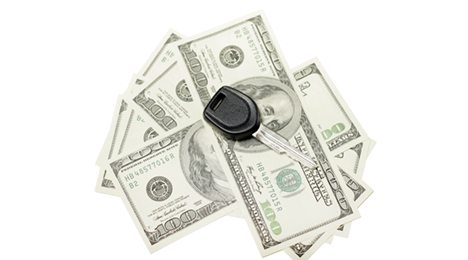New York Fed: Q2 Originations Top $100 Billion

Along with a climb in total outstanding balances that’s now reached 13 quarters in a row, it’s also been nearly eight years since the auto finance industry generated this much paper in a single quarter.
The Federal Reserve Bank of New York’s Q2 2014 Household Debt and Credit Report showed auto loan balances climbed by $30 billion year-over-year. The rise was boosted by $101 billion in auto loan originations, which include leases, during the second quarter.
That figure marks the highest volume of originations since the third quarter of 2006.
Fed analysts also pointed out the percentage of auto loan debt that is 90-day delinquent settled roughly flat in the second quarter at 3.3 percent.
The quarterly report and analysis are based on data from the New York Fed’s Consumer Credit Panel, a nationally representative sample drawn from anonymized Equifax credit data.
Since auto financing, especially in the subprime space, is generating so much media and regulatory attention this summer, a quartet of analysts took some extra time to delve into the numbers deeper. That group included:
— Andrew Haughwout, vice president in the Federal Reserve Bank of New York’s Research and Statistics Group
— Donghoon Lee, a senior economist in the Bank’s Research and Statistics Group
— Joelle Scally, a research associate in the Bank’s Research and Statistics Group
— Wilbert van der Klaauw, senior vice president in the Bank’s Research and Statistics Group
A year ago, this contingent pointed out that 23 percent of auto loans were originated by borrowers with credit scores below 620.
“This share, though significant, is still lower than the 25 to 30 percent share seen during the years preceding the Great Recession,” they said in analysis posted on the New York Fed’s website. “We’ve now revisited these statistics, and find again that the share has increased only slightly since 2010.
“So what has all the fuss been about? The small increase in the share masks the fact that the subprime auto lending market has grown substantially over the last several years,” the group continued.
Haughwout, Lee, Scally and van der Klaauw determined that the dollar value of originations to borrowers with credit scores below 660 has roughly doubled since 2009, while originations for the other credit score groups increased by only about half. The Fed officials noted gains in origination volumes reflect an increase in the average size of the loans more than an increase in the number of loans.
The group went on to mention one advantage of the Fed’s data is the fact that analysts can infer whether a particular auto loan was made by a bank (including credit unions) or an auto finance company, including captives and finance companies that specialize in subprime paper.
The Fed analysts said the two segments came in roughly equal in size during the second quarter as auto finance companies originated 53.7 percent of the new loan balances.
They reiterated that lending to subprime borrowers was hit hard by the last economic crisis. Between mid-2006 and the end of 2009, originations to the below-620 group fell by more than two-thirds, according to the New York Fed.
“Conversely, in the recovery, subprime lending by auto finance companies has shown considerable strength. Since the trough, auto finance company lending to each of the three lowest credit score groups has more than doubled, the analysts said.
“So, subprime auto lending is definitely on the rise in absolute terms, although the increase in prime auto lending over the same period makes the relative increase in the subprime share less pronounced,” they continued.
“This resurgence in subprime loans is stronger among auto finance loans, where subprime lending is — and always has been — more prevalent than bank loans. We will continue to monitor this ongoing change in the consumer lending market,” the group went on to say.

 View The Latest Edition
View The Latest Edition

